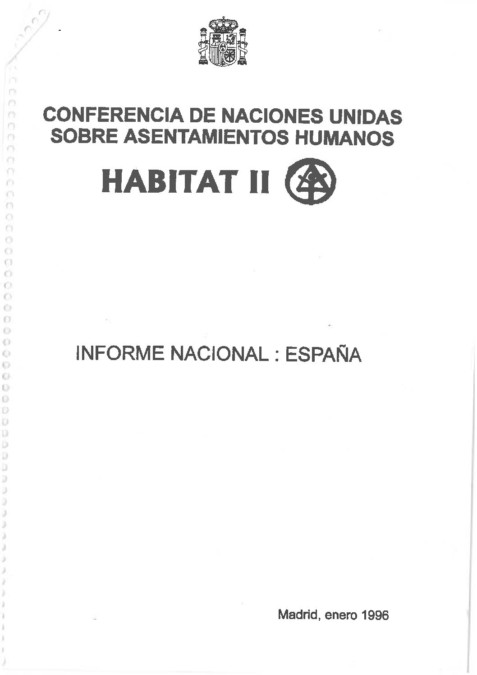

Spain
Urban indicators:
| Value | Year | ||
| Surface area (sq km) | 505970 | 2014 | |
| Population (proj., 000) | 46065 | 2016 | Including Canary Islands, Ceuta and Melilla. |
| Pop. density (per sq km) | 92.4 | 2016 | Including Canary Islands, Ceuta and Melilla. |
| Capital city | Madrid | 2015 | |
| Capital city pop. (000) | 6199 | 2015 | |
| Population growth rate (average annual %) | -0.2 | 2010-2015 | Including Canary Islands, Ceuta and Melilla. |
| Urban population growth rate (average annual %) | 0.7 | 2010-2015 | Including Canary Islands, Ceuta and Melilla. |
| CO2 emission estimates (000 tons/tons per capita) | 236969/5.1 | 2013 | |
| Population using improved drinking water sources (urban/rural, %) | 100.0/100.0 | 2015 | |
| Population using improved sanitation facilities (urban/rural, %) | 99.8/100.0 | 2015 |
| 1995 | 2005 | 2014/2015 | |
| Urban population ('000) | 29,903 | 33,522 | 37,561 |
| Level of urbanization (%) | 75.9 | 77.3 | 79.6 |
National Report:
National Report Executive Summary:
On January the 1st, 2011, the Spanish population reached 47,190,493 inhabitants. Of these, 79% is concentrated in urban areas with a population of more than 10,000. Over the past 20 years, Spain has indeed undergone an intensive urbanisation process. As an illustration, the proportion of artificial land over the total land area in Spain has reached 3.7%. Furthermore, urban density has grown from 62.2 inhabitants/km² in 2001 to 73,7%/km² in 2011. However, over the long term, a loss of 2.6 million inhabitants is expected up to 2022, to give about 44 million inhabitants. Spain’s demography is then characterised by an ageing and decrease of the overall population.
The country accounts for 8,119 municipalities, of which only 398 have more than 20,000 inhabitants. Between 1996 and 2013, small urban areas have undergone the highest growth rhythms (25%). Among urban buildings as a whole, housing occupies 80% of the built-up space.
Housing construction has been very dynamic in Spain. The country features indeed the highest rate of home ownership in Europe (78.9% in 2011), due to a weak rental market, an easy access to credit, a policy of public incentives towards low-income families, and, finally, a taxation policy favouring ownership. This situation led many households into debt. As a consequence, many evictions occurred in recent years.
Last, transport sector has been very dynamic, as it represents today more than 40% of the total energy consumption in Spain.
Statistics:
Basic services and infrastructure
Urban population with access to safe drinking water (%)
Urban population with access to adequate sanitation (%)
Statements by Spain:
-
Habitat III Plenaries
Events:
- At the Habitat III Conference:


From Habitat II (1996), to Habitat III (2016): Building with Scarce Resources in Latin America
- More events:

Towards the Implementation of the New Urban Agenda – Urban Landscape

World Habitat Day

The Habitat III Conference in Quito and the New Urban Agenda

Urban Journalism Academy During Thematic Meeting on Public Spaces

Thematic Meeting: Public Spaces

Smart City Expo World Congress

Seminar – Habitat III: Engagement Towards a New Urban Agenda
We extend our gratitude to the generous contributions of the Government of Spain to the Habitat III Trust Fund, which allowed the Habitat III process to be carried out as it was envisioned: in an innovative, participatory and inclusive manner.




